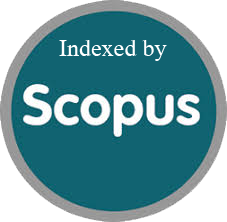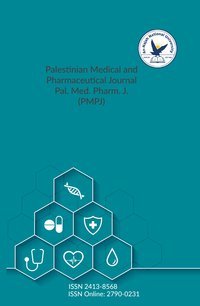Drug utilization pattern and predictors of costs among patients with type II diabetes in Palestine
Article info
2017-05-11
2017-06-29
93 - 112
Keywords
- Palestine
- Drug utilization pattern
- Self–care management
- Cost
Abstract
This study aims to evaluate drug utilization pattern, assess type II diabetes costs and their relationship with patient characteristics, drug utilization pattern, self–care management, and glycemic control. An observational follow–up study conducted for 6 months among 79 type II diabetes patients, randomly selected at a tertiary care center in Ramallah, Palestine. Data on patient characteristics, drug utilization pattern, self–care management and glycemic control were collected from personal interview and medical records review. Data on costs was obtained from personal interview in each visit. Statistical Package for Social Sciences (SPSS v 16.0) was used to perform a descriptive, univariate, and multivariate analysis. The most common prescribed medications were Biguanides, followed by Insulin. Approximately 59.5% of the participants received Statins, 49.4% of them received Angiotensin–Converting Enzyme Inhibitors, 16.5% received oral hypoglycemic drugs, 17.7% received Insulin, and 59.5% were on the combination treatment of oral hypoglycemic drugs and Insulin. The mean ± SD medications number was 4.7 ± 2.2. The mean ± SD age of the participants was 55.9 ± 8.4 years old. More than half of the participants were males (57.0%). The estimated type II diabetes health care cost per 6 months of follow–up incurred by patients and family members was Israeli Shekel 24,000 (US Dollar 6,480). Approximately 47.3% of the participants followed a diabetic meal plan, 60.8% participated in physical exercise, 23.0% tested their blood glucose level at home, and 78.1% were considered adherent with the Eight–Item Morisky Medication Adherence Scale (MMAS–8) score ≥6. While only 21.9% had glycated hemoglobin (HbA1c) level ≤7%. The medications number and Angiotensin–Converting Enzyme Inhibitors were significantly related to health care cost. Type II diabetes costs were not significantly related to self–care management and good glycemic control. This study reflects the need for a more rational prescription mode in line with the patients’ health status, and provides a useful platform for further pharmaco–economic research, meanwhile in reducing the costs incurred by patients and family members, whereas it is obvious that the participants were low–income patients.
Drug utilization pattern and predictors of costs among patients with type II diabetes in Palestine
معلومات المقال
2017-05-11
2017-06-29
93 - 112
الكلمات الإفتتاحية
- Palestine
- Drug utilization pattern
- Self–care management
- Cost
الملخص
This study aims to evaluate drug utilization pattern, assess type II diabetes costs and their relationship with patient characteristics, drug utilization pattern, self–care management, and glycemic control. An observational follow–up study conducted for 6 months among 79 type II diabetes patients, randomly selected at a tertiary care center in Ramallah, Palestine. Data on patient characteristics, drug utilization pattern, self–care management and glycemic control were collected from personal interview and medical records review. Data on costs was obtained from personal interview in each visit. Statistical Package for Social Sciences (SPSS v 16.0) was used to perform a descriptive, univariate, and multivariate analysis. The most common prescribed medications were Biguanides, followed by Insulin. Approximately 59.5% of the participants received Statins, 49.4% of them received Angiotensin–Converting Enzyme Inhibitors, 16.5% received oral hypoglycemic drugs, 17.7% received Insulin, and 59.5% were on the combination treatment of oral hypoglycemic drugs and Insulin. The mean ± SD medications number was 4.7 ± 2.2. The mean ± SD age of the participants was 55.9 ± 8.4 years old. More than half of the participants were males (57.0%). The estimated type II diabetes health care cost per 6 months of follow–up incurred by patients and family members was Israeli Shekel 24,000 (US Dollar 6,480). Approximately 47.3% of the participants followed a diabetic meal plan, 60.8% participated in physical exercise, 23.0% tested their blood glucose level at home, and 78.1% were considered adherent with the Eight–Item Morisky Medication Adherence Scale (MMAS–8) score ≥6. While only 21.9% had glycated hemoglobin (HbA1c) level ≤7%. The medications number and Angiotensin–Converting Enzyme Inhibitors were significantly related to health care cost. Type II diabetes costs were not significantly related to self–care management and good glycemic control. This study reflects the need for a more rational prescription mode in line with the patients’ health status, and provides a useful platform for further pharmaco–economic research, meanwhile in reducing the costs incurred by patients and family members, whereas it is obvious that the participants were low–income patients.
Since 2022
Cite Score (Scopus): 0.8
Time to First Decision: 3 Days
Submission to Acceptance: 45 Days
Acceptance to Publication: 64 Days
Acceptance Rate: 17%
Why should you
Publish With Us?
An-Najah National University
Nablus, Palestine
Nablus, Palestine
- P.O. Box
- 7, 707
- Fax
- (970)(9)2345982
- Tel.
- (970)(9)2345560
- (970)(9)2345113/5/6/7-Ext. 2628
- [email protected]
- EIC
- Prof. Waleed Sweileh
The Palestinian Medical and Pharmaceutical Journal (Pal. Med. Pharm. J.) © 2024 by An-Najah University, Nablus, Palestine is licensed under CC BY-NC 4.0
News and Views
